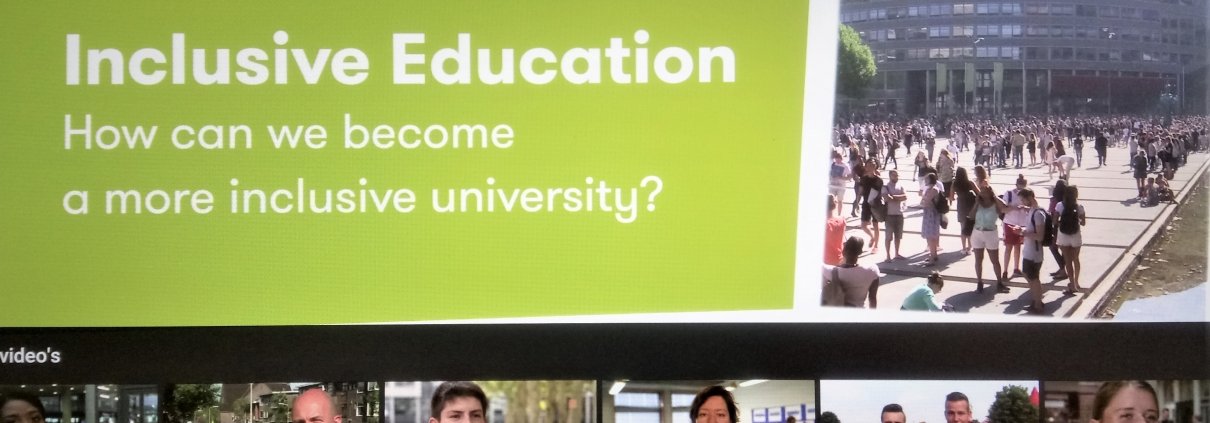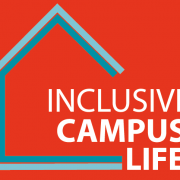The First (and last) 100 Days Initiative
Excerpt
This initiative started in September / October 2018 and is primarily directed towards students with an above average distance towards higher education. In the urbanized areas of The Netherlands, three major factors are: secondary vocational prior education (as opposed to ‘regular’ secondary education that explicitly prepares for HE), being male and having a migrant background. University teachers (from THUAS) and teachers from supplying secondary vocational schools will be professionalized to be better prepared for providing these target groups with appropriate education.
Narrative, origins and objectives of the initiative
What kind of project is this? Please give a short description (summary) of it.
The First (and last) 100 Days Initiative started in September / October 2018 and is primarily directed towards students with a more than average chance of not entering into higher education. In the urbanized areas of The Netherlands, there are three major factors: secondary vocational prior education (as opposed to ‘regular’ secondary education that explicitly prepares for HE), being male and having a migrant background. University teachers (from THUAS) and teachers from supplying secondary vocational schools will be professionalized to be better prepared for providing these target groups with appropriate education.
Please tell us why, in general, this project is considered a successful one?
This is a new initiative, so it still has to prove itself. However, several measures are taken to ensure its success. For example, it is designed to claim as little extra time of the teachers as possible, and to be budget friendly. It also utilizes several small initiatives rather than a large one.
And why would you consider it a grass-roots initiative?
The initiative fits in with a number of teachers that already had questions about this topic. Many students seem to ‘suddenly’ disappear, quite anonymously, from school during the first months of every academic year. This is a remarkable fact because no student starts a new study without high hopes, one would say.
What challenges needed to be solved in this project?
This project attempts to prevent students from dropping out of school unnecessarily and untimely. Research shows that some students don’t succeed in building a sufficient network in the first 100 days of their study, and that these students are at a much higher risk of dropping out early. With extra attention and coaching, accessible and empathetic teachers, helpful and understanding peers, family, friendly staff and a safe, transparent organization and study-environment, all students should be able to survive the first 100 days of their study, building a foundation from which they can move with self-confidence.
[contact-form][contact-field label="Name" type="name" required="true" /][contact-field label="Email" type="email" required="true" /][contact-field label="Website" type="url" /][contact-field label="Message" type="textarea" /][/contact-form]
.
Is this initiative based on any particular theoretical framework? Which one?
The initiative will be started from the lectorate Inclusive Education (THUAS); it is based on a detailed preliminary inquiry; and burning questions from the workplace, asking for practical measures. Research were done at THAUS on the first 100 days of them being students, as part of the regional G5 (see appendix for report in Dutch). Furthermore, the growth mindset and psychological interventions by Yeager, Frank Tuitt (Inclusive Excellence; the five dimensions) and indigenous theory (being aware of other students’ contexts): Tuhiwai Smith[1] and others are taken into account.
[1] Smith, T.L. (1999): Decolonizing Methodologies: Research and Indigenous Peoples. Dunedin, New Zealand: University of Otago Press.
(Appendix) Is your intervention standing on its own or is it a part of a bigger and more holistic approach?
For now, it stands alone, but there are currently similar ideas for projects like this one.
Please describe the group(s) intended as beneficiaries of this initiative
Why has this group (have these groups) been chosen?
Students that bear a combination of the three aforementioned factors (there are more factors, off course, all students are allowed to participate if they want to) tend to experience a longer distance towards HE that, even today, is mainly (mostly unintentionally) made by white middle class people for white middle class (female) students. These target groups are the most visible in terms of lagging behind and dropping out; their view and their talents seem to be underrepresented in today’s HE.
Could you please tell us something about the relative size of the (of each) target group, within the school/university population, region and/or country?
Exact numbers are not available at the moment. But the initiative starts at the social programs, economics, nursing and didactics. The economics and social work programs have a specific vocational school – HE track program that will give us access to this population. Many students in these programs have a secondary vocational and/or migrant background; it is estimated that both groups encompass around 10% of the community.
Which social characteristics are taken into account and what is the geographical area covered?
Students with an above average remoteness from HE. The geographical area is The Hague area.
On which level is the project implemented?
The level of a department of THUAS, and two adjacent programs.
Please describe the political and socio-economic factors that you believe have been important enablers for your initiative
Did the initiative have political support?
The Dutch government (Ministry of Education, Culture and Science) encourages more diversity in HE, and stimulates the universities (especially in the big cities, the so-called Big Five of large professional HR organizations) to encourage emancipation and empowerment of underrepresented groups (with stipendiums, annual reports, etc.). In regional policies (e.g. Rotterdam, The Hague metropolitan Area), there is an even bigger sense of urgency because the urban population here is super diverse. Educational organizations are stimulated to cooperate, and to create pathways for students from underrepresented groups. The municipality of The Hague, for example, participates in projects to create a more inclusive local society and education.
How did it fit with local, regional or national policies?
In addition to the answer in the question above: the municipality of The Hague wants to pay extra attention to the different pathways to higher education and wants to encourage educational organizations to make their programs as accessible as possible.
Who are the stakeholders supporting the initiative?
In this first round (could be expanded in the future): boards and deans of the educational organizations involved, but especially teachers and coordinators from both school types (university and secondary vocational school) and students (some of them mentoring their peers).
Are there particular demographic changes present that are influencing the project?
The burning questions among some teachers as mentioned above are not particularly new, but awareness about diversity and the rapidly changing student population seems to grow recently. The drop-out rates for these vulnerable populations remain high. It seems that the time has come to take measures and to try things out.
What is the institutional strategy and culture of the (educational) organization?
The Hague University of Applied Sciences (THUAS) wants to be an inclusive, international and highly diverse university community. A community in which respect for different backgrounds and world views is a core value. THUAS wants to change (slogan: “Let’s Change. You. Us. The world”)
https://www.thehagueuniversity.com/about-thuas/about-us/our-story https://www.thehagueuniversity.com/about-thuas/about-us/working-towards-change
To what extent does the initiative have an influence on institutional policy (or potential influence) of the (educational) organization?
The initiators want THUAS to encourage teachers to look differently at, and act differently towards, their students, using more inclusive pedagogy and didactics (especially during the first 100 days). The initiators want to promote the idea of community and extend the concept of learning and support community to outside of the institution’s walls, and include the students’ extended communities. The teacher as a (self) reflective practitioner, a role model. This is a major professionalization issue for the future.
(Appendix) Is there public support for your initiative and the issue it addresses?
Many people in the field are receptive to the message of inclusion. Changing the system, however, is more difficult. This takes time.
(Appendix) What other factors do you think have been important for the success of this initiative?
No other factors, as far as we know.
Please describe the overall initiative design and the methods and tools used to reach the goals
Please describe the specific activities carried out.
This project is aligned with the Hang In There project (a digital project led by students where they encourage each other to persevere the first year; described elsewhere). The initiative has just started and stakeholders are exploring to find out and experience what the most effective mix of activities is (at the same time gathering data). Some of those activities are:
Community support network meetings – having meetings in the community with students and their extended community members (community empowerment, community as a resource).
Toolkit sessions – Inclusive training sessions for teachers (teacher empowerment; Inclusivity toolkit is another aligned initiative that will be described elsewhere). These are organized for UAS (“hbo”)-teachers, but also for secondary vocational (“mbo”) teachers and for managers, deans, policy makers, etc.
First year internship return – Participating students who did such an internship make a short movie about what they have learned. This is done to inspire others.
Research in urban neighborhoods (and data gathering; under construction).
What were the key roles (teacher, student, management team etc.) within the project?
Teachers, participating students, mentoring students, coordinators
What ideas, tools, theories, models, methodology (etc.) have been used to reach the goals?
The plan is to interview (survey) the participating students and teachers several times and to compare the outcomes. This also makes it possible to monitor the project to a certain extent. Students are asked to answer questions about and express their feelings towards their program, the teachers, their fellow students, their own expectations and their self-esteem. Do they feel happy, acknowledged, or rather lonely? Teachers are asked about their perspectives on the program, do they feel well-equipped? Are they certain or not?
What are the final revenues of the project?
Since the project took off only very recently, there are no revenues yet.
Please describe if your project ensured its sustainability
If so, how did you ensure the short-term impact of the project?
As described earlier, the design of the project makes it affordable and accessible. During the project, students will be asked whether they feel at home at THUAS; this will give the project leaders the opportunity to monitor and, if necessary, correct it.
And how did you ensure the long-term impact of the project?
It is not ensured yet, but the idea is to organize more rounds, continuously improving the project. It is very important to keep it affordable (in working hours as well as in costs).
Has your project been replicated elsewhere?
Not as far as the providers are aware of.
Please tell us about the resources used in this initiative
What was the budget for the initiative?
Around 220.000 Euros was requested for the aligned projects, mostly for staff costs, including a team leader, two junior researchers and part-time support staff from research and educational services. Since internal funding (via the “Innovatiefonds”) is not easy to obtain, other sources are explored too.
How much did the initiative depend on volunteers?
No volunteers in this project.
How were the costs perceived by the public/the sector/other stakeholders?
The initiators don't know the answer to this question (yet).
To what extent did the initiative achieve its objectives?
Please describe the evidence to support the success of your initiative.
Evidence / facts have to be produced yet. If the project is successful, students will be increasingly satisfied with their study programs and their learning environment (including their teachers). They have better networks and show lower drop-out rates than students from earlier cohorts. All students should feel a good sense of belonging at THUAS. Teachers will feel better equipped to deal with diversity in their classroom and will look differently at the students and their needs.
Did the intervention lead to any unintended (positive) outcomes?
Not applicable, but if the project is successful unintended positive outcomes will undoubtedly be seen.
What indicators (quantitative and qualitative) have you measured to demonstrate success?
Indicators to be measured: self-report about the student’s self-esteem, sense of belonging and well-being in relation to their study program, their perception of the study-environment (Is it safe? Is it transparent?); the same questions are asked at the beginning and end of the project. The end-survey will also be taken from the entire first year student population. This is done to compare their results to the students that participated in the program. (Other possible indicators are explored).
(Appendix) How did you evaluate/monitor this intervention?
Since the project took off only very recently, no evaluation or monitor took place yet.





 (C)E-Fabrik • G.de CROP
(C)E-Fabrik • G.de CROP

